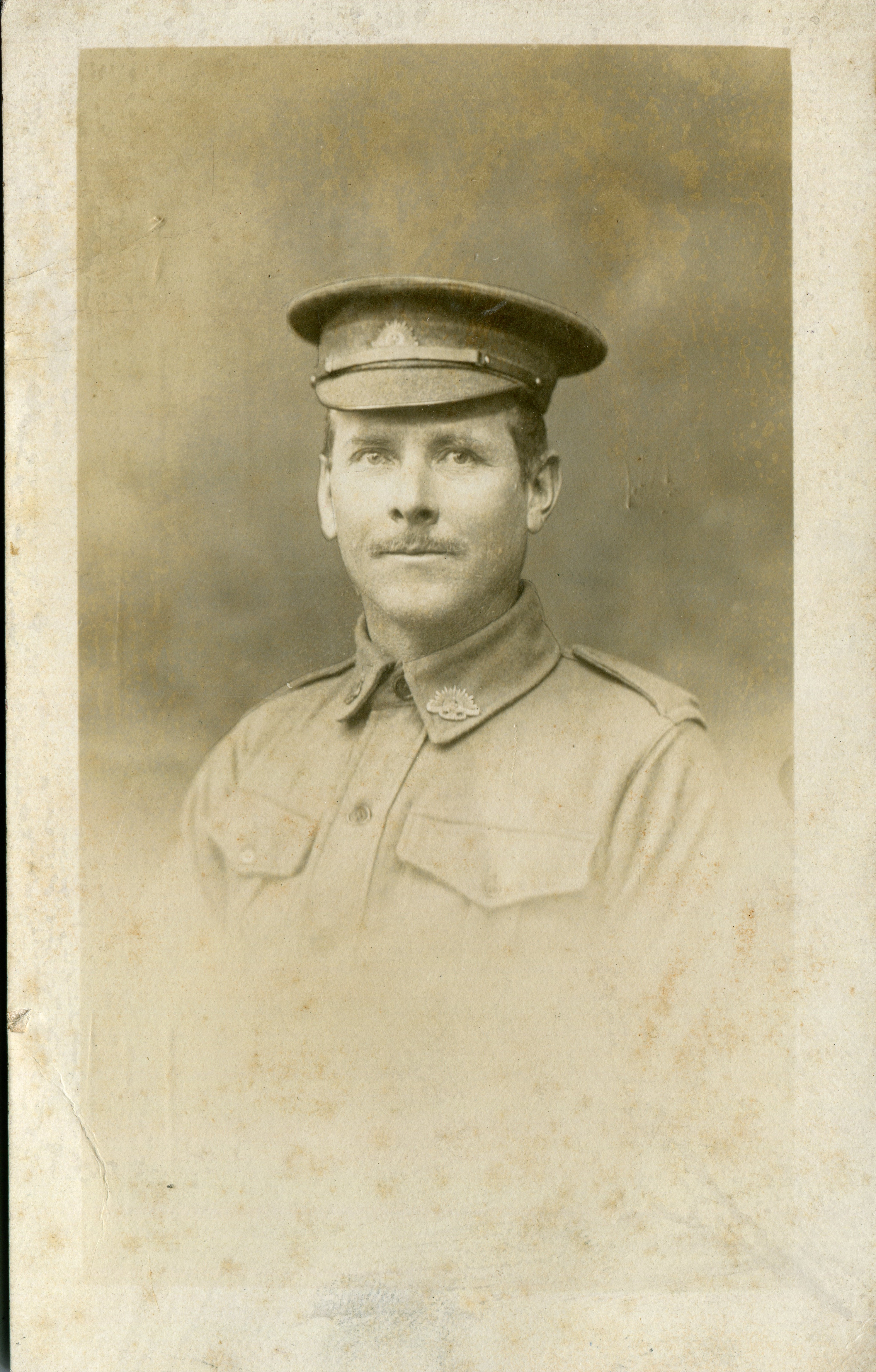Pte
Edward Michael Batten
Informations sur naissance
|
Date de naissance: 13/04/1877 |
|
Lieu de naissance: Rylstone, New South Wales, Australia |
Informations générales
|
Profession: éleveur de bétail |
Informations service militaire
|
Pays: Australia |
|
Force armée: Australian Imperial Force |
|
Rang: Private |
|
Numéro de service: 2376 |
|
Incorporation date: 15/04/1916 |
|
Incorporation nom de lieu: Bathurst, New South Wales, Australia |
|
Unités: — Australian Infantry, 45th Bn. (Dernière unité connue) |
Informations sur décès
|
Date de décès: 12/10/1917 |
|
Lieu de décès: Keerselaarhoek, Belgique |
|
Cause du décès: Killed in action (K.I.A.) |
|
Âge: 40 |
Cimetière
|
Tyne Cot Cemetery Parcelle: II Rangée: A Tombe: 3 |
Distinctions et médailles 2
|
British War Medal Médaille |
|
Victory Medal Médaille |
Points d'intérêt 3
| #1 | Lieu de naissance | ||
| #2 | Lieu d'enrôlement | ||
| #3 | Lieu du décès (approximatif) |
Mon histoire
Private Edward Michael Batten served in the Australian Infantry 45th Battalion, part of the 12th Australian Brigade of the 4th Australian Division. The 4th Australian Division participated in the First Battle of Passchendaele on the 12th of October 1917. Its task was to flank guard the 3rd Australian Division, North of the Ypers-Roulers railway, during the attack. The attack of the 4th Australian Division was carried out by the 47th and 48th Australian Battalions, of the 12th Australian Brigade. The 45th Battalion co-operated by providing a party of 100 men to dig a communication trench to the first objective and two parties of 50 men each established forward dumps for this attack. The rest of the Battalion remained in support. At 5.25 a.m. the allied artillery put down a creeping barrage, behind which the attacking parties advanced at 5.30 a.m. The Germans replied by shelling the whole sector of the 45th Battalion. The shelling continued throughout the day. The men assigned for the digging and establishing of the communication trench and forward dumps, also commenced their work at 5.30 a.m. The 47th and 48th Battalions established outpost across the Keiberg Spur. The two Battalions set of at 5.30 a.m. except for a portion, which remained at Assyria. The 47th Battalion captured the first objective, the Red Line, and the 48th moved through them on to the second objective. It gained touch with the 3rd Australian Division along the railway. However the men of the 3rd Australian Division were unable to carry on their advance. Which meant that the 48th Battalion had to hold their positions to guard the flank of the 3rd Australian Division. Meanwhile Assyria was taken. The attacking Battalions of the 12th Australian Brigade consolidated their gains, but suffered heavy losses during the process. The Battalion was fired upon from Vienna Cottage, but managed to fend off two German counterattacks. Notwithstanding these small victories, it became clear that the troops wouldn’t be able to stop further attacks. Especially because the 9th Battalion, of the 3rd Australian Division, directly on their left had pulled back. The positions were consequently abandoned and the troops withdrew to their jump off line. The 47th and 48th Australian Battalions reached the old frontline, which was held by the 45th and started digging in. The dumps and the communication trench, which the 45th had established, were shot apart by the German artillery. The German shelling eased during the night. And the men were relieved from the frontline during the following day. Private Edward Michael Batten was killed in action on the 12th of October 1917. According to eyewitnesses in his Red Cross Files he was taking shelter in a dugout with a number of men of the 45th Battalion, when the dugout took a direct hit from a German shell. Many men were buried in the debris. The dugout was cleared out during the day and multiple bodies were recovered. Their were round ten or fifteen casualties in the dugout. Private Edward Michael Batten was one of them. His remains were initially buried near Kerselaarhoek, South of the Ypres-Roulers Railway (28.D.17.a.8.0.), just South of Tyne Cot Cemetery, between Dash- and Defy Crossing. He was later reburied at Tyne Cot Cemetery.
Sources 4
|
45th Australian Infantry Battalion, (Australian War Memorial, Campbell (AWM), AWM4 23/62/20). https://www.awm.gov.au/collection/C1338583 Sources utilisées |
|
First Australian Imperial Force Personnel Dossiers, 1914-1920 (National Archives of Australia, Canberra (NAA), B2455, BATTEN E M). https://recordsearch.naa.gov.au/SearchNRetrieve/Interface/SearchScreens/NameSearch.aspx. Sources utilisées |
|
Lee J.E., The Chronicle of the 45th Battalion A.I.F., (Uckfield, Naval and Military Press, 2009), pg. 53. Sources utilisées |
|
McCarthy C., The Third Ypres Passchendaele. The Day-by-Day Account, (London, Arms & Armour Press, 1995), pg. 113-114. Sources utilisées |
Complément d’informations 4
|
Commonwealth War Graves Commission Database https://www.cwgc.org/find-records/find-war-dead/casualty-details/461872 |
|
Namenlijst (In Flanders Fields Museum) https://namenlijst.org/publicsearch/#/person/_id=456f763e-0131-4f92-bed1-e198270e9370 |
|
Lives of the First World War (Imperial War Museum) https://livesofthefirstworldwar.iwm.org.uk/lifestory/7353245 |
|
The AIF Project (UNSW Canberra) https://aif.adfa.edu.au/showPerson?pid=16410 |
